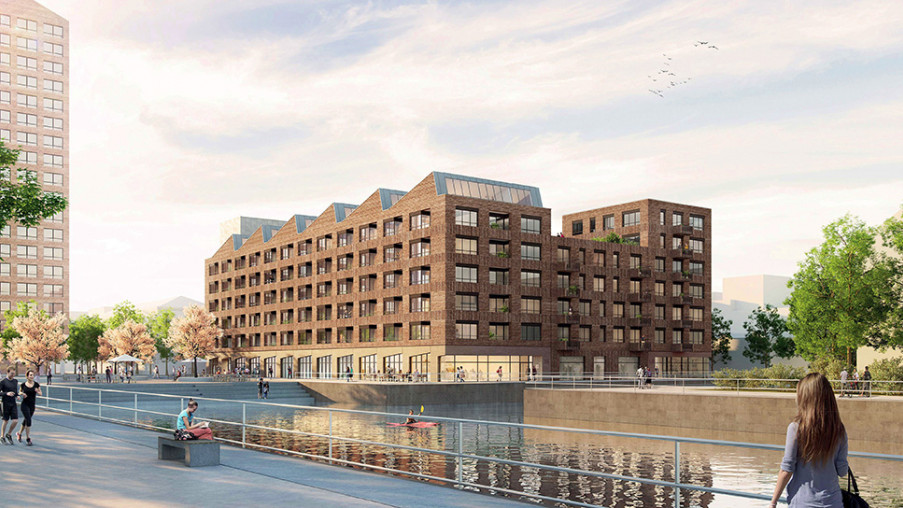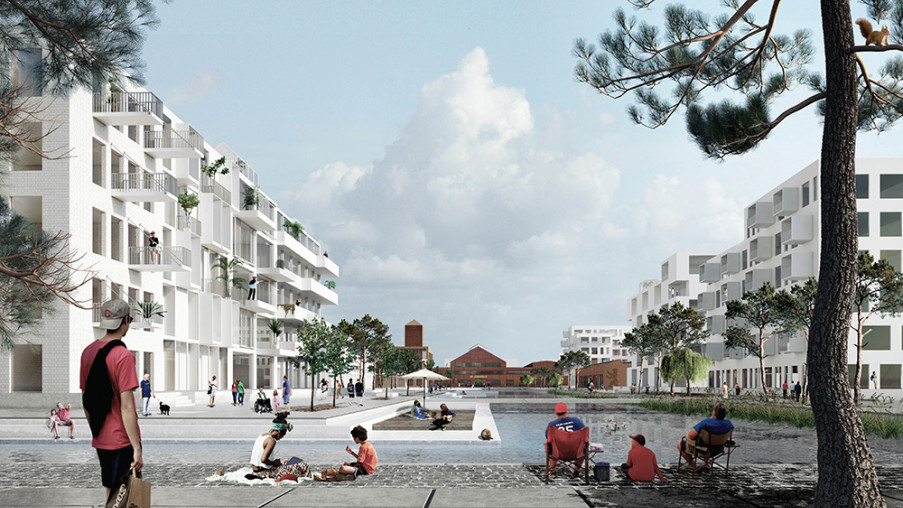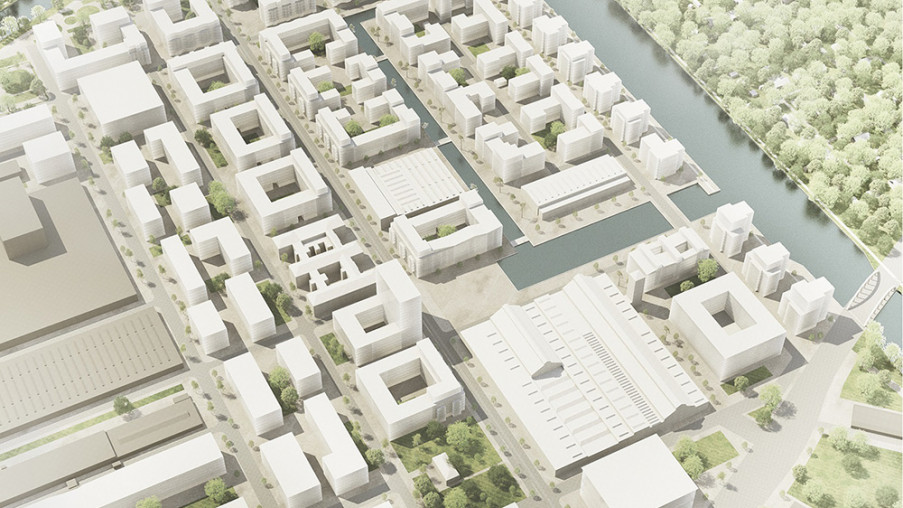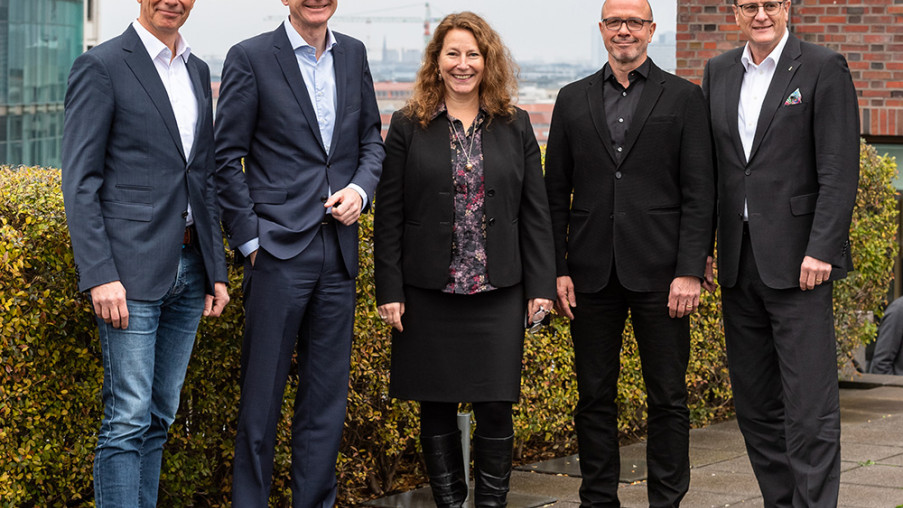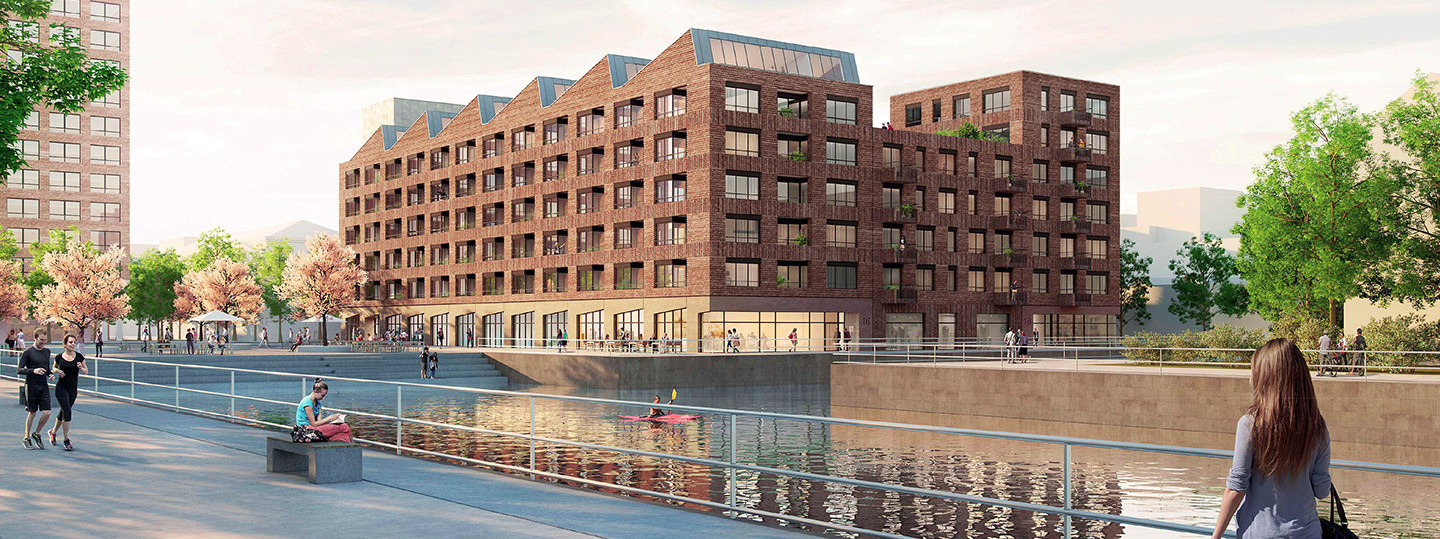
The “Das Neue Gartenfeld” in Berlin-Spandau: Model Quarter for the City of Diversity in the 21st Century
- Contract signed for holistically designed and future-oriented "Quartierswerk Gartenfeld".
- ENGIE Deutschland and GASAG form joint venture to develop solutions for energy, mobility and digitalization for the Das Neue Gartenfeld planning community
- Combination of innovative cogeneration and renewable energies leads to CO2 savings of over 1,100 tons per year
Berlin – The quarter “Das Neue Gartenfeld” in Berlin-Spandau will provide residential and commercial space for over 10,000 people. More than 3,700 apartments, 600 commercial units and extensive communal areas and facilities are being built on an area of around 31 hectares on more than 40 construction sites, enabling a high level of social, functional and community-oriented mixing. Now an important milestone has been reached for the former cable production site: the developers, who form the planning consortium Das Neue Gartenfeld GmbH & Co.KG, signed a contract with ENGIE Deutschland GmbH and GASAG Solution Plus GmbH. The novelty is that both energy companies will not only plan, build and operate the efficient energy supply as an independent "Quartierswerk Gartenfeld", but also provide comprehensive utility services for modern, urban living in a "Smart City". For the holistic offering, the partners are investing a high double-digit million euro amount in sustainable electricity, heating and cooling supply, service water management, e-charging solutions, parking management and sharing offers. The latest information and communication technologies will be used to manage the digital networking of the quarter. The information for this is made available to users via a user-friendly and interactive app.
The planning consortium for Das Neue Gartenfeld, consisting of the developers UTB Projektmanagement GmbH, BUWOG, Baugenossenschaft BeGeno16 eG, Wohnungsbaugenossenschaft Am Ostseeplatz eG, and Jula GmbH, has already defined the guidelines for the innovative and sustainable supply infrastructure in a "manifesto" during the preliminary planning phase in 2018. The goal declared therein is to develop a demand-oriented, low-emission and mobility-strong urban quarter; the urban space benefits the people, not the motorized individual traffic, thus parking areas are consistently planned at the edge of the settlement. The Das Neue Gartenfeld will be ten years ahead of the climate targets set by the German government for 2040 thanks to its synergetic approach, sustainable energy supply and digitalization.
Thomas Bestgen, Managing Director of UTB Projektmanagement GmbH, Spiritus Rector of the New Garden Field and Managing Director of the planning consortium alongside BUWOG Managing Director Eva Weiß: "From the very beginning, our vision was to put people at the center. We want to offer users a high quality of life, give the city back to them, and create a city of diversity with low-threshold access for broad segments of the population. The consistent use of smart technologies benefits everyone in Gartenfeld and ensures comprehensive, sustainable and affordable services in the long term. We are very pleased that ENGIE Deutschland and GASAG have joined forces and prevailed in a tough competition with their performance and service portfolio."
ENGIE Deutschland and GASAG formed a joint venture for the first time and faced a two-year process to meet the high requirements of the planning community for a model city of the 21st century. Buro Happold GmbH in Berlin was in charge of planning the infrastructure.
BUWOG Managing Director Eva Weiß: "We are looking forward to working together with the consortium of two such powerful partners. This has taken us a very significant step further towards the realization of the new Gartenfeld district. Now we need the support of the district and the Senate to work together to create the conditions for the new housing that Berlin so urgently needs."
"I am delighted that ENGIE - which has been rooted in the capital for almost 25 years - can now play an active role in creating a piece of the future in Berlin. Our group is working around the world to implement the transition to climate neutrality. We are building on this experience to make the energy, mobility and communication of a smart city a reality in the Das Neue Gartenfeld neighborhood. It is particularly important to me that we also let the residents participate, for example via a comprehensive neighborhood app and locally generated tenant electricity," says Manfred Schmitz, CEO of ENGIE Germany.
"With our holistic and innovative supply concept, the Gartenfeld quarter is exemplary throughout Germany for sustainable neighborhood development. Here, together with our partners, we can show that energy, mobility and digitalization must be thought of together when it comes to a livable city and achieving climate protection goals. For a CO2-neutral future, we are further expanding our range of expertise with this project and, as a company that has been active in Berlin for 175 years, we will thus also actively shape this change," says Georg Friedrichs, Chairman of the Management Board of GASAG AG, underlining the GASAG Group's commitment.
Sustainability, efficient energy generation as well as high user-friendliness via a digital platform and affordability are central anchor points of the Quartierswerk:
- Mobility Hub at the edge of the neighborhood as a state-of-the-art, central mobility platform that organizes urban mobility in a completely different way. 50 percent of the parking spaces will be equipped with charging options; around 250 vehicles are planned for the e-sharing fleet, consisting of cars, bicycles and scooters, among others.
- Bundling of all offers via a neighborhood app, through which all users can transparently and easily view contracts and control consumption. The app is also used to book services, the e-vehicle fleet and parking space, and people in the neighborhood can communicate neighborly via their own chat channels.
- Decentralized cooling supply and climate-friendly heat supply via an innovative combined heat and power system in combination with heat pumps and a power-to-heat system. Preparation for the use of hydrogen.
- Photovoltaic systems on all roofs of the residential buildings and supply of tenant electricity.
- Collection of rainwater in a large retention basin and on retention areas on the roofs; processing into service water for green space irrigation.
- Micro-hubs distributed throughout the neighborhood for use of the e-sharing fleet with scooters, bicycles and cargo bikes. Cars are provided centrally at the Mobility Hub.
- Provision of future-proof fiber-optic cables, free WLAN in parts of the neighborhood, and LoRaWAN wireless technology.
The development plan for the neighborhood was drawn up in 2015. The process of weighing up the renewed participation of public interest groups is currently underway. The results are expected to be published and the public involved in the summer of 2022, and the development plan is expected to be approved at the end of 2022 so that building construction can begin as quickly as possible.
ENGIE Deutschland GmbH
